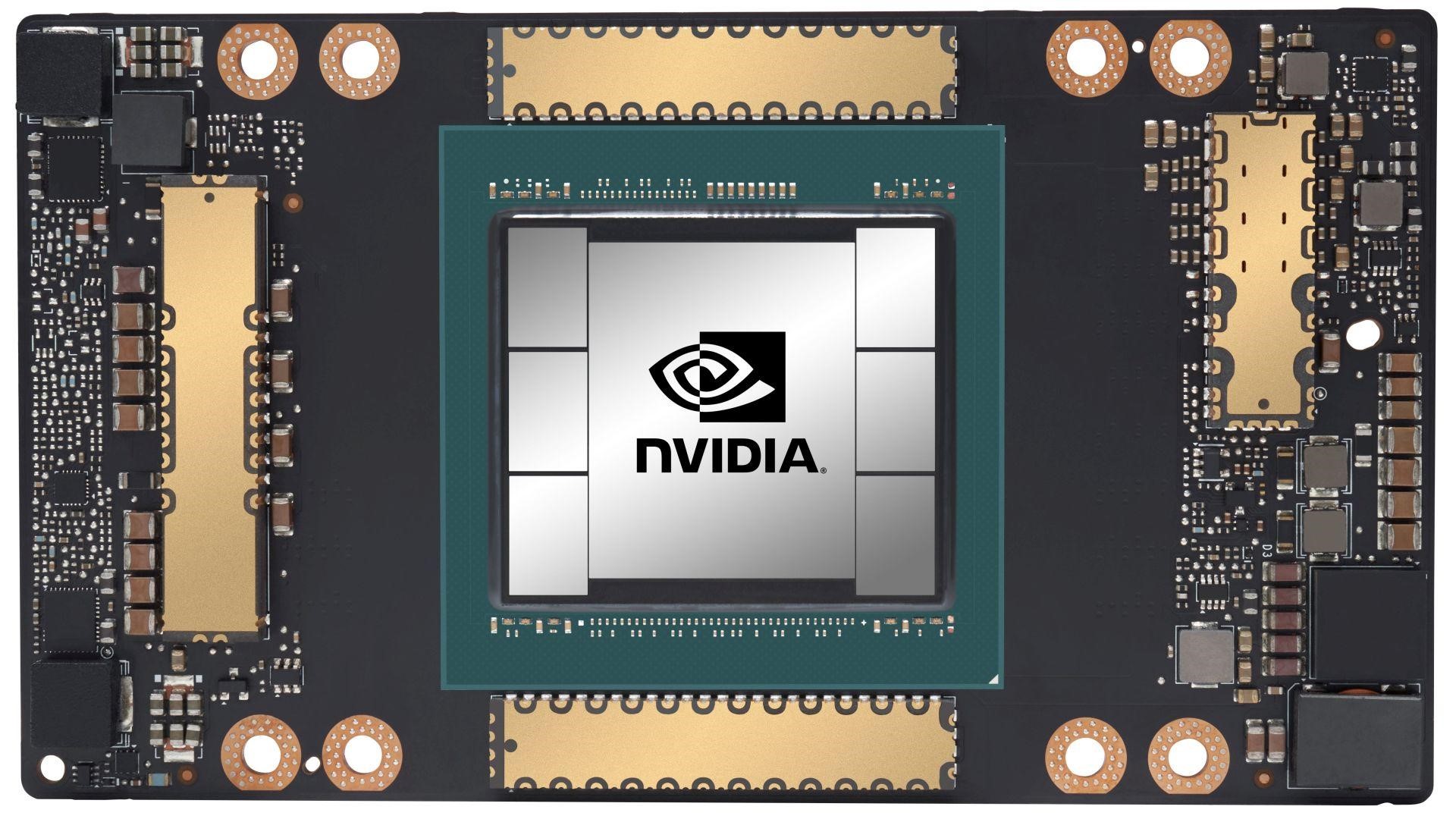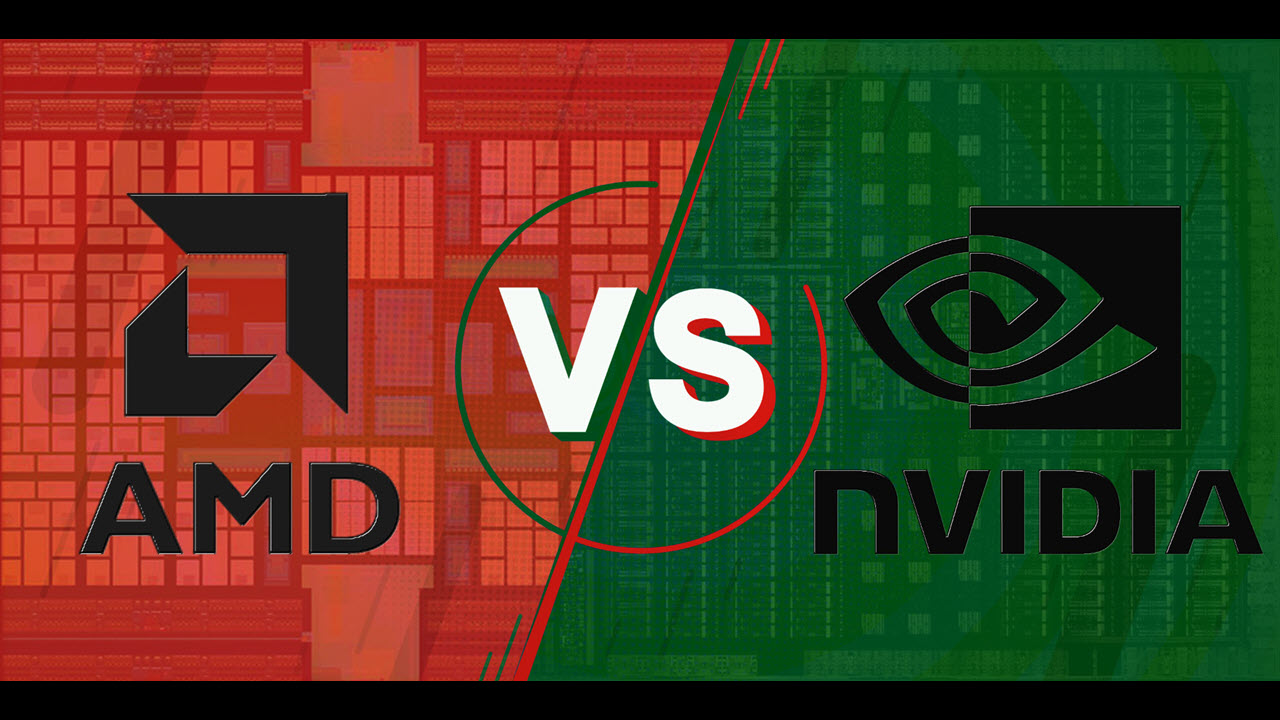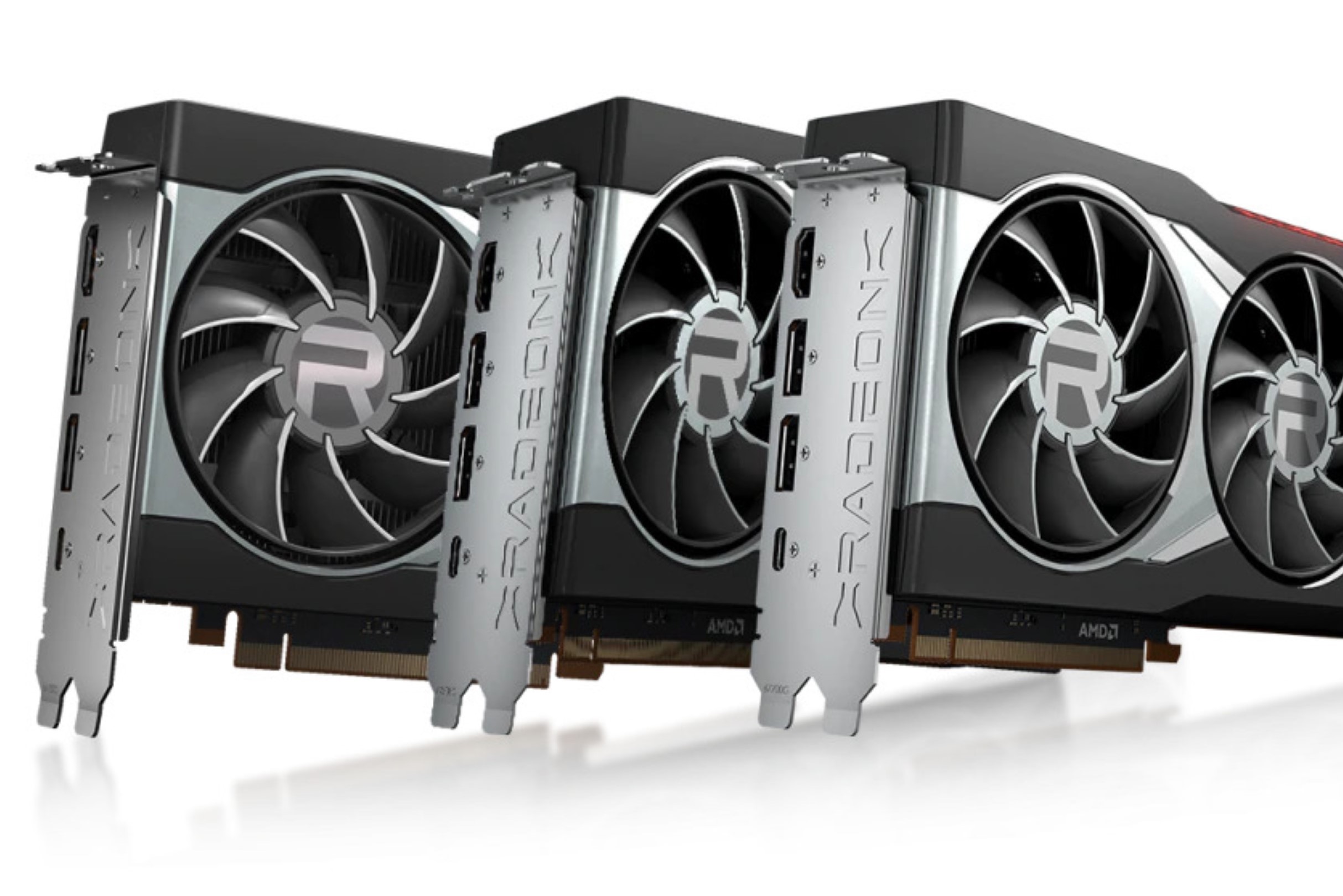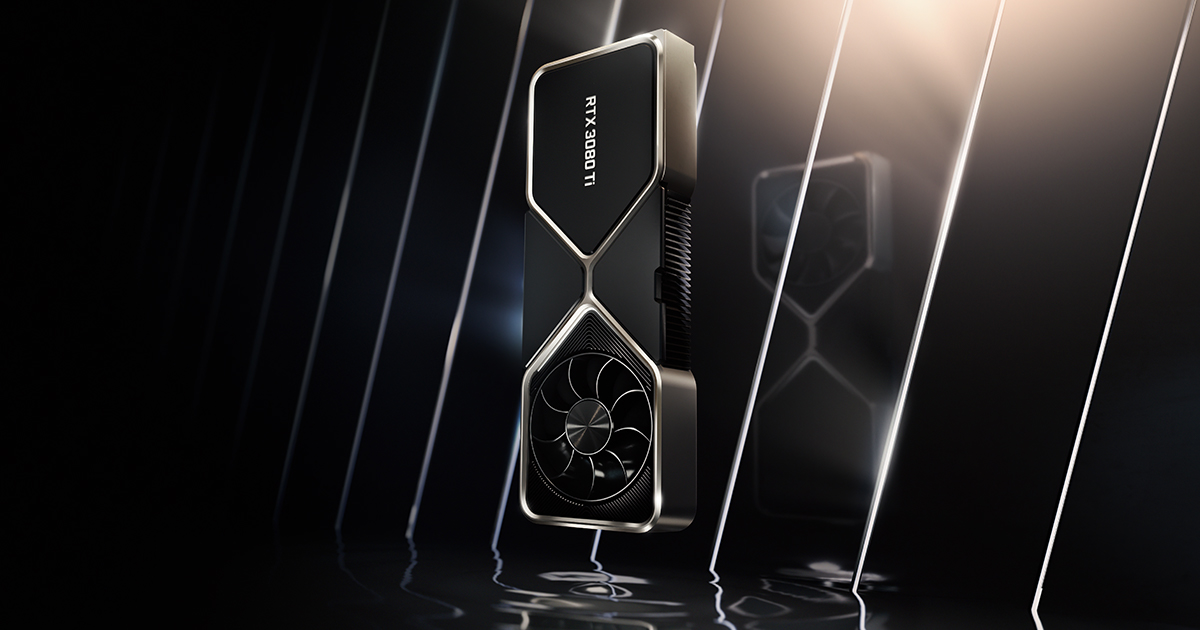Introduction
Welcome to the fascinating world of Nvidia GPUs! If you’ve ever wondered about the powerful graphics cards that drive high-performance gaming, artificial intelligence, and professional visualization, then you’re in the right place.
Graphics Processing Units, commonly known as GPUs, have revolutionized the computing industry with their ability to handle complex graphical calculations and data parallel processing. Nvidia, a leading technology company, is renowned for its cutting-edge GPUs that have set new standards in performance, efficiency, and visual rendering.
This article will delve into the world of Nvidia GPUs, providing you with a comprehensive understanding of their architecture, features, and benefits. Whether you’re a gaming enthusiast looking to upgrade your graphics card or a professional seeking high-performance computing capabilities, this guide will equip you with the knowledge to make an informed decision.
We will explore the history of Nvidia GPUs, their various types and series, and highlight the key features that make them stand out. Additionally, we will provide a comparison of different Nvidia GPUs, so you can choose the one that best suits your needs.
Whether you’re interested in immersive gaming experiences, accelerated machine learning, or rendering extraordinary virtual worlds, Nvidia GPUs have been meticulously designed to meet the demands of the most demanding tasks. Strap in and get ready to dive into the incredible world of Nvidia GPUs and uncover their power.
What is a GPU?
A Graphics Processing Unit, or GPU, is a specialized electronic circuit that focuses on rapidly processing and rendering complex visual data. Unlike a Central Processing Unit (CPU) that handles general-purpose tasks, a GPU is designed specifically for graphics-related calculations and parallel processing tasks.
The primary function of a GPU is to render and display images, videos, and animations on computer screens. This makes GPUs essential components for activities such as gaming, 3D modeling, video editing, and virtual reality experiences.
What sets GPUs apart from CPUs is their ability to handle thousands of small, simultaneous computations in parallel. This parallel processing capability allows GPUs to perform complex tasks like image rendering, shading, and physics calculations much faster and more efficiently than a CPU.
GPUs consist of numerous cores, each capable of executing mathematical operations independently. These cores work together to process large sets of data in parallel, resulting in the speedy and efficient rendering of complex graphics.
Another crucial aspect of GPUs is their capacity to handle massive amounts of memory bandwidth. Memory bandwidth refers to the speed at which data can be read from or written to the memory of the GPU. This capability is crucial for handling the vast amounts of graphical data required for rendering intricate scenes and textures in real-time.
Over the years, GPUs have evolved beyond just graphics processing and have become instrumental in other fields such as artificial intelligence, scientific simulations, and cryptocurrency mining. Their parallel processing power and high-performance capabilities make them effective tools for accelerating computing tasks that require heavy data processing and calculations.
In summary, GPUs are specialized processors that excel at rendering complex visual data and performing parallel computations. They have revolutionized the gaming and graphics industries, and with their evolving capabilities, they continue to push boundaries in various fields of science and technology.
What is Nvidia GPU?
Nvidia GPUs, specifically those produced by NVIDIA Corporation, are widely recognized as some of the most powerful and advanced graphics processing units available in the market. NVIDIA has established itself as a leader in the field of GPU technology, consistently delivering high-performance solutions for gaming, professional visualization, and data processing.
What sets Nvidia GPUs apart is their focus on innovation and efficiency. NVIDIA has developed various groundbreaking technologies and architectures that have pushed the boundaries of graphics processing. Their GPUs are engineered to deliver exceptional visual fidelity, lightning-fast rendering speeds, and enhanced computational capabilities.
Nvidia GPUs excel in handling complex graphical calculations, such as real-time rendering of 3D models, advanced shading techniques, and realistic physics simulations. They are specifically optimized to deliver smooth and immersive gaming experiences with high frame rates, realistic lighting and shadows, and stunning visual effects.
Besides gaming, Nvidia GPUs have made a significant impact in fields such as artificial intelligence and scientific research. The parallel processing power of these GPUs greatly accelerates deep learning algorithms, enabling faster training and inference times for AI models. Additionally, their immense computational horsepower makes them valuable tools for data processing, simulations, and other computationally intensive tasks.
Nvidia GPUs are known for their powerful performance and energy efficiency, thanks to NVIDIA’s constant efforts to develop cutting-edge architectures. Their GPUs often incorporate advanced features such as Tensor Cores for AI acceleration, Ray Tracing for realistic lighting and reflections, and DLSS (Deep Learning Super Sampling) for enhanced image quality.
Nvidia also offers a comprehensive suite of software tools and libraries that harness the full potential of their GPUs. This includes the CUDA parallel computing platform, which enables developers to leverage GPU performance for a wide range of applications. Additionally, Nvidia’s drivers and optimization initiatives ensure that their GPUs provide the best performance and compatibility with the latest software and games.
In summary, Nvidia GPUs are renowned for their exceptional performance, innovation, and versatility. From gaming enthusiasts to professionals in AI and scientific research, Nvidia GPUs provide the processing power and cutting-edge technologies required for demanding graphical and computational tasks.
History of Nvidia GPUs
The history of Nvidia GPUs dates back to 1993 when the company was founded by Jensen Huang, Chris Malachowsky, and Curtis Priem. Initially, Nvidia focused on providing high-performance graphics solutions for the gaming industry.
In 1999, Nvidia launched its groundbreaking GeForce 256 graphics card, which introduced several industry-first features, including hardware transform and lighting, a concept that offloaded complex 3D calculations from the CPU to the GPU. This breakthrough revolutionized 3D gaming and set the stage for future advancements in graphics processing.
Over the years, Nvidia introduced several notable GPU series, each addressing the growing demands of graphics performance and computational power. The GeForce 3 series, released in 2001, introduced programmable shading capabilities, enabling developers to create more realistic and visually stunning game environments.
In 2006, Nvidia unveiled its first DirectX 10 compatible GPU, the GeForce 8 series, which incorporated technologies like unified shader architecture and support for high-definition content. This series laid the foundation for DirectX 10-based gaming and brought advanced visual effects to the mainstream.
Building on the success of the GeForce 8 series, Nvidia released the GeForce 9 series in 2008, featuring higher clock speeds and improved performance for gaming enthusiasts. This series introduced support for NVIDIA PhysX technology, enabling realistic physics simulations in games.
In 2009, Nvidia introduced a major breakthrough in GPU technology with the launch of the GeForce GTX 200 series. This series featured the world’s first consumer graphics processing unit with 1 billion transistors, delivering unmatched performance and visual quality for gaming and professional applications.
With the rise of virtual reality (VR) and augmented reality (AR), Nvidia recognized the need for more powerful GPUs to handle the demanding requirements of these immersive technologies. In 2016, they unveiled the Pascal architecture-based GPUs, including the GeForce 10 series, which offered a significant leap in performance and power efficiency.
Continuing their legacy of innovation, Nvidia released the Turing architecture in 2018, with the RTX 20 series GPUs leading the way. The Turing GPUs introduced real-time ray tracing, a groundbreaking rendering technique that emulates how light interacts with virtual objects, bringing unparalleled realism to games and visual applications.
Most recently, Nvidia introduced the Ampere architecture, powering the RTX 30 series GPUs. These GPUs showcase incredible performance improvements, enhanced AI capabilities with Tensor Cores, and broader support for real-time ray tracing. The RTX 30 series represents a significant milestone in GPU technology, setting new benchmarks for gaming and professional graphics.
Throughout its history, Nvidia has consistently pushed the envelope of GPU technology, driving innovation and delivering cutting-edge solutions for gamers, professionals, and researchers alike.
The Architecture of Nvidia GPUs
The architecture of Nvidia GPUs is a critical aspect that defines their performance capabilities and sets them apart from other graphics processing units in the market. Nvidia has continuously invested in research and development to design innovative architectures that deliver exceptional graphics rendering and computational power.
One of the key architectures developed by Nvidia is the CUDA (Compute Unified Device Architecture). CUDA is a parallel computing platform and programming model that allows developers to leverage the immense processing power of Nvidia GPUs for general-purpose computing tasks. It enables developers to write software code that can be executed on the GPU, significantly accelerating complex calculations.
Another noteworthy architecture introduced by Nvidia is the Maxwell architecture. The Maxwell GPUs feature improved energy efficiency and performance per watt, making them ideal for gaming and professional applications. With advanced features such as dynamic super resolution, which enhances graphics clarity, and multi-frame sampled anti-aliasing, which improves image quality, the Maxwell architecture offers a substantial leap in visual fidelity.
Building upon the Maxwell architecture, Nvidia unveiled the Pascal architecture. Pascal GPUs introduced several groundbreaking features, including the GDDR5X memory, which boasts faster memory clocks and higher bandwidth, resulting in improved performance. Pascal also incorporated simultaneous multi-projection, which enhances gaming experiences by allowing the GPU to render multiple views simultaneously, reducing latency and increasing performance.
In 2018, Nvidia introduced the Turing architecture, a major leap in GPU technology. The Turing GPUs brought real-time ray tracing capabilities to consumer graphics cards for the first time. This advanced rendering technique simulates how light interacts with objects in a scene, resulting in more realistic lighting, reflections, and shadows. Turing also introduced Tensor Cores, specialized units for accelerated deep learning tasks, making Turing GPUs highly sought after by AI researchers and developers.
The most recent architecture from Nvidia is Ampere, powering the RTX 30 series GPUs. Ampere GPUs feature enhanced CUDA cores, increased memory bandwidth, and improved ray-tracing capabilities, delivering exceptional performance for gaming, content creation, and AI applications. Ampere GPUs also incorporate technologies like DLSS (Deep Learning Super Sampling), which uses AI to upscale lower-resolution images to higher resolutions, enhancing visual quality without significant performance impact.
These architectural advancements demonstrate Nvidia’s commitment to pushing the boundaries of GPU technology. With each new architecture, Nvidia aims to deliver faster, more energy-efficient GPUs that are capable of handling demanding graphical and computational tasks.
Types of Nvidia GPUs
Nvidia offers a diverse range of GPUs, catering to different needs and budgets. Whether you’re a casual gamer, a content creator, or a professional in AI research, Nvidia has a GPU series designed to meet your requirements. Let’s explore some of the main types of Nvidia GPUs available:
- GeForce RTX Series: The GeForce RTX series is Nvidia’s flagship line of gaming GPUs. These GPUs are built on the latest architecture and feature advancements like real-time ray tracing and AI-driven technologies. The RTX series delivers incredible gaming performance, allowing gamers to experience stunning visuals and smooth gameplay with high frame rates.
- GeForce GTX Series: The GeForce GTX series is another popular gaming-focused GPU line from Nvidia. GTX GPUs offer great performance for gaming enthusiasts at a more affordable price point compared to the RTX series. Although they lack some of the advanced features like real-time ray tracing, GTX GPUs still deliver excellent performance in modern games.
- Quadro Series: Nvidia’s Quadro series targets professionals in fields like animation, 3D modeling, and video editing. These GPUs are optimized for professional applications and offer features specifically tailored to the needs of content creators and designers. Quadro GPUs provide enhanced stability, driver support, and certified performance on professional software.
- Titan Series: The Titan series is designed for those who require top-of-the-line performance for both gaming and professional applications. Titan GPUs offer exceptional gaming capabilities while providing a significant boost in computational power for tasks like AI research, scientific simulations, and video encoding. They are the ultimate choice for enthusiasts and professionals seeking uncompromising performance.
- Nvidia Tesla: The Nvidia Tesla series is geared towards data center and high-performance computing applications. These GPUs deliver massive parallel processing power for tasks like AI training and scientific simulations. Tesla GPUs offer unparalleled performance and scalability, making them ideal for researchers and institutions that require powerful computing capabilities.
These are just a few examples of the diverse range of Nvidia GPUs available. Nvidia continues to innovate and release new GPU models tailored to specific needs and market segments, ensuring that there is an Nvidia GPU suitable for every user.
Features and Benefits of Nvidia GPUs
Nvidia GPUs come with a wide range of features and offer numerous benefits to gamers, professionals, and researchers alike. Let’s explore some of the key features and advantages that Nvidia GPUs provide:
- Exceptional Graphics Performance: Nvidia GPUs are known for their outstanding graphics performance, delivering smooth, immersive, and visually stunning gaming experiences. With advanced shading techniques, high frame rates, and realistic visual effects, Nvidia GPUs bring games to life with remarkable detail and fidelity.
- Real-Time Ray Tracing: Nvidia was the first to introduce real-time ray tracing in consumer GPUs. This technology accurately simulates how light interacts with objects, resulting in more realistic lighting, reflections, and shadows in games and applications, enhancing visual quality and immersion.
- AI Acceleration: Nvidia GPUs, especially those featuring Tensor Cores, provide powerful AI acceleration capabilities. This allows researchers, developers, and content creators to leverage the power of deep learning and artificial intelligence for tasks such as image recognition, natural language processing, and generative modeling.
- High-Performance Computing: Nvidia GPUs excel in high-performance computing applications due to their parallel processing architecture. Whether it’s scientific simulations, data processing, or complex computations, Nvidia GPUs offer exceptional performance and accelerate time-consuming tasks, enabling faster results and increased productivity.
- Enhanced Productivity and Workflows: Professionals in fields like design, animation, and video editing benefit from Nvidia GPUs’ optimized drivers and support for professional software. Nvidia provides stable and certified performance, ensuring smooth workflows and efficient content creation.
- Energy Efficiency: Nvidia has made significant strides in improving the energy efficiency of their GPUs. Newer architectures, such as Ampere, deliver excellent performance per watt, allowing users to enjoy high-quality gaming and computational power while keeping power consumption and heat generation in check.
- Wide Software Support: Nvidia GPUs enjoy extensive software support, with frequent updates and optimizations to ensure compatibility and performance with the latest games and applications. Nvidia also offers additional software tools like GeForce Experience, which provides features like automatic driver updates, game optimization, and easy streaming capabilities.
- Flexibility and Range of Options: Nvidia offers a wide range of GPU models tailored to different budgets and requirements. From entry-level GPUs for casual gamers to high-end solutions for enthusiasts and professionals, Nvidia provides options that cater to diverse user needs.
These features and benefits demonstrate why Nvidia GPUs are highly regarded in the industry. Whether you seek immersive gaming experiences, accelerated AI capabilities, or optimized performance for professional tasks, Nvidia GPUs offer the power, efficiency, and reliability to meet your demands.
Popular Nvidia GPU Series
Nvidia offers several popular GPU series that cater to different user needs and preferences. These series have gained popularity among gamers, professionals, and enthusiasts due to their exceptional performance, advanced features, and reliability. Let’s explore some of the most renowned Nvidia GPU series:
- GeForce RTX Series: The GeForce RTX series has gained significant popularity among gamers for its cutting-edge technologies and impressive performance. These GPUs introduce real-time ray tracing, enabling realistic lighting and reflections in games. The RTX series also incorporates AI-driven technologies, such as DLSS and Nvidia Reflex, which improve image quality and reduce input latency, creating an immersive and responsive gaming experience.
- GeForce GTX Series: The GeForce GTX series has long been a favorite among gaming enthusiasts. These GPUs offer excellent performance for gaming without the advanced features of real-time ray tracing found in the RTX series. The GTX series provides a range of models to suit different budgets, ensuring that gamers can enjoy smooth gameplay and high frame rates.
- Quadro Series: Nvidia’s Quadro series targets professionals in industries such as animation, design, and video editing. These GPUs deliver exceptional performance and stability, combined with optimized drivers for professional software. Quadro GPUs offer certified support for applications like AutoCAD, Adobe Creative Suite, and Autodesk Maya, ensuring reliable performance and compatibility for content creators and designers.
- Titan Series: The Titan series represents Nvidia’s high-end consumer GPUs, appealing to both gamers and professionals who demand top-tier performance. Titan GPUs offer unrivaled power for gaming, content creation, and AI research. With their immense computational capabilities and generous VRAM, Titan GPUs excel in graphics-intensive tasks, providing users with extraordinary performance.
- Nvidia Tesla: The Nvidia Tesla series is designed for high-performance computing and data center applications. These GPUs deliver massive parallel processing power, making them ideal for demanding tasks like scientific simulations, AI research, and data analytics. Tesla GPUs, with their advanced architecture and optimized drivers, are trusted by researchers and institutions for their superior computing capabilities.
These popular Nvidia GPU series provide users with a wide range of options that suit various needs and budgets. From advanced gaming features to professional-grade performance, Nvidia continues to innovate and push the boundaries of GPU technology, solidifying its position as a leading provider of graphics processing units.
Comparison of Nvidia GPUs
When choosing an Nvidia GPU, it’s important to consider factors such as performance, features, price, and power consumption. Let’s compare some popular Nvidia GPUs to help you make an informed decision:
- GeForce RTX 3080: The RTX 3080 is a powerhouse GPU, offering outstanding performance in gaming and professional applications. It features 8704 CUDA cores, 10 GB or 20 GB of GDDR6X memory, and supports real-time ray tracing and DLSS technology. The RTX 3080 delivers excellent 4K gaming performance and is an ideal choice for high-resolution gaming and content creation.
- GeForce RTX 3070: The RTX 3070 offers a balance between performance and affordability. With 5888 CUDA cores and 8 GB of GDDR6 memory, it provides excellent 1440p and entry-level 4K gaming performance. The RTX 3070 supports real-time ray tracing and DLSS, making it a popular choice for gamers seeking high-quality visuals at a more budget-friendly price point.
- GeForce GTX 1660 Super: The GTX 1660 Super is a solid choice for 1080p gaming. It offers 1408 CUDA cores and 6 GB of GDDR6 memory, delivering smooth performance in popular titles. While lacking real-time ray tracing support, the GTX 1660 Super still provides exceptional value for gamers on a budget.
- Quadro RTX 5000: The Quadro RTX 5000 targets professionals and content creators who require optimized stability and performance for demanding applications. With 3072 CUDA cores, 16 GB of GDDR6 memory, and hardware-accelerated ray tracing, the Quadro RTX 5000 excels in tasks such as CAD, 3D modeling, and video editing.
- Titan RTX: The Titan RTX is a top-tier GPU designed for enthusiasts and professionals. It features 4608 CUDA cores, 24 GB of GDDR6 memory, and supports real-time ray tracing and DLSS. The Titan RTX delivers exceptional performance in gaming, content creation, and AI research, making it a versatile choice for those seeking uncompromising power.
- Nvidia A100: The Nvidia A100, part of the Tesla series, is a data center GPU with a staggering 6912 CUDA cores and up to 40 GB of HBM2 memory. It delivers unprecedented performance for high-performance computing and AI workloads, making it the go-to choice for researchers and institutions working on complex simulations and deep learning tasks.
Choosing the right Nvidia GPU depends on your specific requirements and budget. Consider factors such as the intended use, desired performance level, and compatibility with your system and software. It’s also crucial to keep in mind that new GPU models are released regularly, so it’s worth researching and comparing the latest offerings to make the best decision for your needs.
Buying a Nvidia GPU
When it comes to buying a Nvidia GPU, there are several factors to consider to ensure you make the right choice. Here are some key points to keep in mind when purchasing a Nvidia GPU:
- Identify Your Needs: First, determine your specific requirements. Are you a gamer looking for improved gaming performance? Are you a professional in need of a GPU for content creation or high-performance computing? Understanding your needs will help narrow down your options.
- Consider Performance: Look for a GPU that provides the level of performance you desire. Consider the number of CUDA cores, memory capacity, and clock speeds. Higher-end GPUs typically offer better performance, but they also come with a higher price tag.
- Check Compatibility: Ensure that the Nvidia GPU you choose is compatible with your system. Check the GPU’s power requirements, physical dimensions, and connectivity options, such as HDMI or DisplayPort. Additionally, verify that your power supply unit can handle the GPU’s power demands.
- Research Pricing: Compare prices across different retailers to find the best deal for your chosen Nvidia GPU. Keep in mind that prices can vary based on the specific model, features, and availability. Consider setting a budget to help guide your decision.
- Read Reviews: Before making a purchase, read reviews and user feedback about the Nvidia GPU you are considering. These reviews can provide insights into the GPU’s performance, reliability, and compatibility with specific games or software.
- Consider New vs. Used: Determine whether you prefer to buy a new or used Nvidia GPU. Buying new offers the benefit of warranty coverage and the latest technology, while buying used can save you money. If opting for a used GPU, ensure that it is in good condition and has not been overclocked excessively.
- Check Availability: Due to the high demand for Nvidia GPUs, availability can be a concern. Keep an eye on stock updates and consider signing up for alerts from retailers to be notified when a desired GPU becomes available.
- Warranty and Support: Consider the warranty and support provided by Nvidia and the retailer. A reliable warranty ensures that you have recourse in case of any manufacturing defects or issues that may arise.
By considering these factors, doing thorough research, and making an informed decision, you can confidently purchase the Nvidia GPU that best suits your needs and budget. Whether you’re a gamer, professional, or researcher, an Nvidia GPU can elevate your computing experience and provide the power and performance required for your specific tasks.
Conclusion
In conclusion, Nvidia GPUs have revolutionized the world of graphics processing, delivering exceptional performance, advanced features, and unrivaled visual quality. From gaming enthusiasts to professionals in fields like AI research, design, and content creation, Nvidia GPUs offer a range of options to suit diverse needs and budgets.
With their powerful architecture, Nvidia GPUs excel in rendering complex graphics, providing realistic lighting, reflections, and shadows through technologies like real-time ray tracing. They also offer AI acceleration capabilities, allowing for faster deep learning algorithms and enhanced computational performance.
Nvidia has continually pushed the boundaries of GPU technology, introducing innovative architectures like Turing and Ampere. These architectures have paved the way for features such as real-time ray tracing and DLSS, enhancing gaming experiences and enabling faster and more efficient computations.
Popular GPU series such as the GeForce RTX, GTX, Quadro, and Titan cater to different user segments, ensuring there is an Nvidia GPU for every requirement. Whether you’re a gamer seeking the ultimate gaming performance, a professional looking for optimized stability and support for creative applications, or a researcher requiring immense computational power, Nvidia has you covered.
When purchasing a Nvidia GPU, it’s important to consider factors such as performance, compatibility, pricing, and warranty coverage. By carefully evaluating your needs and researching the available options, you can make an informed decision and select the right Nvidia GPU for your specific requirements.
With their exceptional graphics performance, advanced features like real-time ray tracing and AI acceleration, and a wide range of options, Nvidia GPUs continue to raise the bar in the world of graphics processing. Whether you’re gaming, creating content, or performing advanced computational tasks, Nvidia GPUs provide the power and performance needed to elevate your computing experience.

























